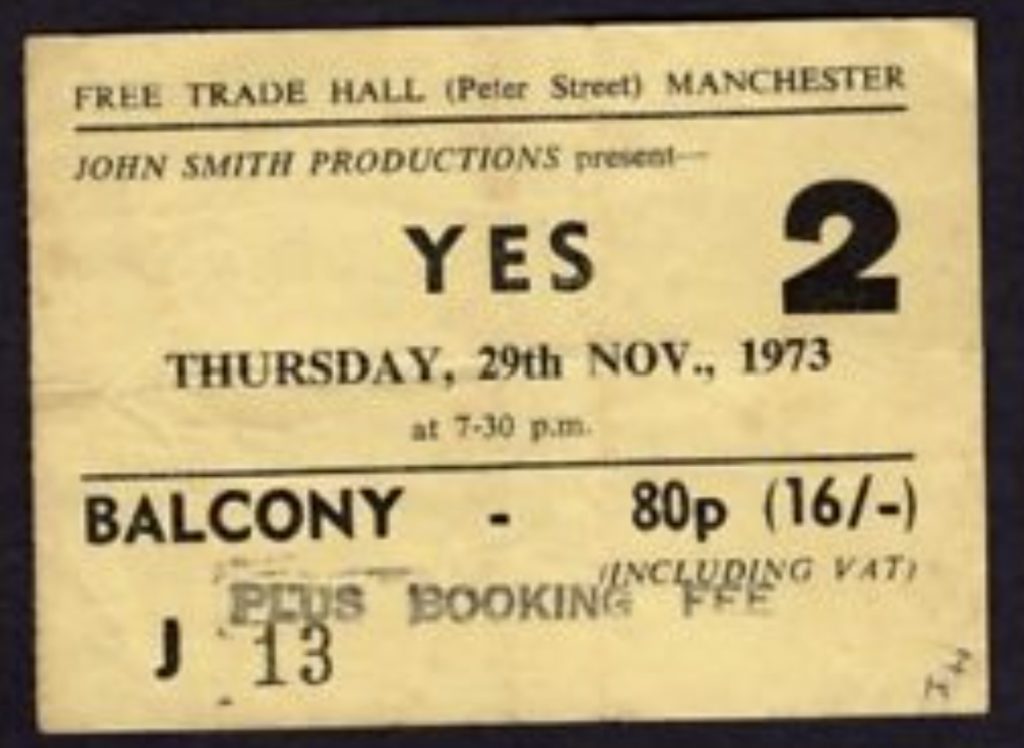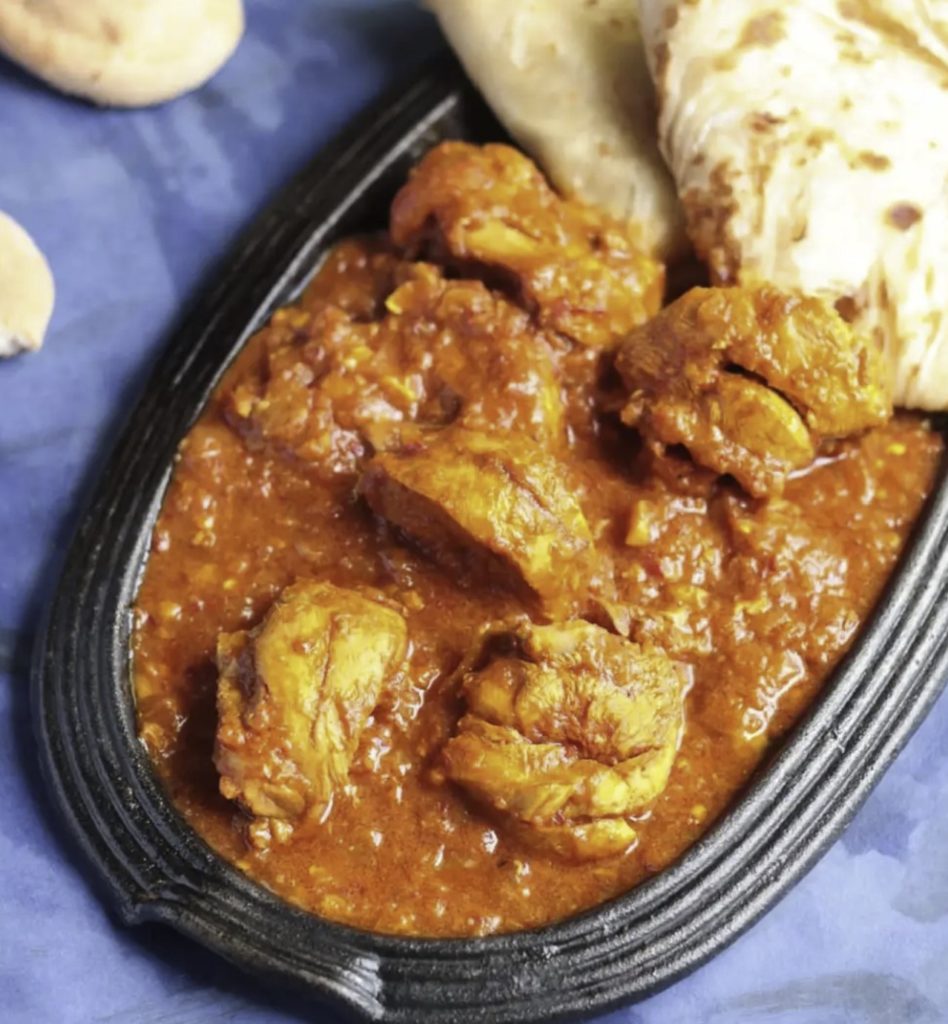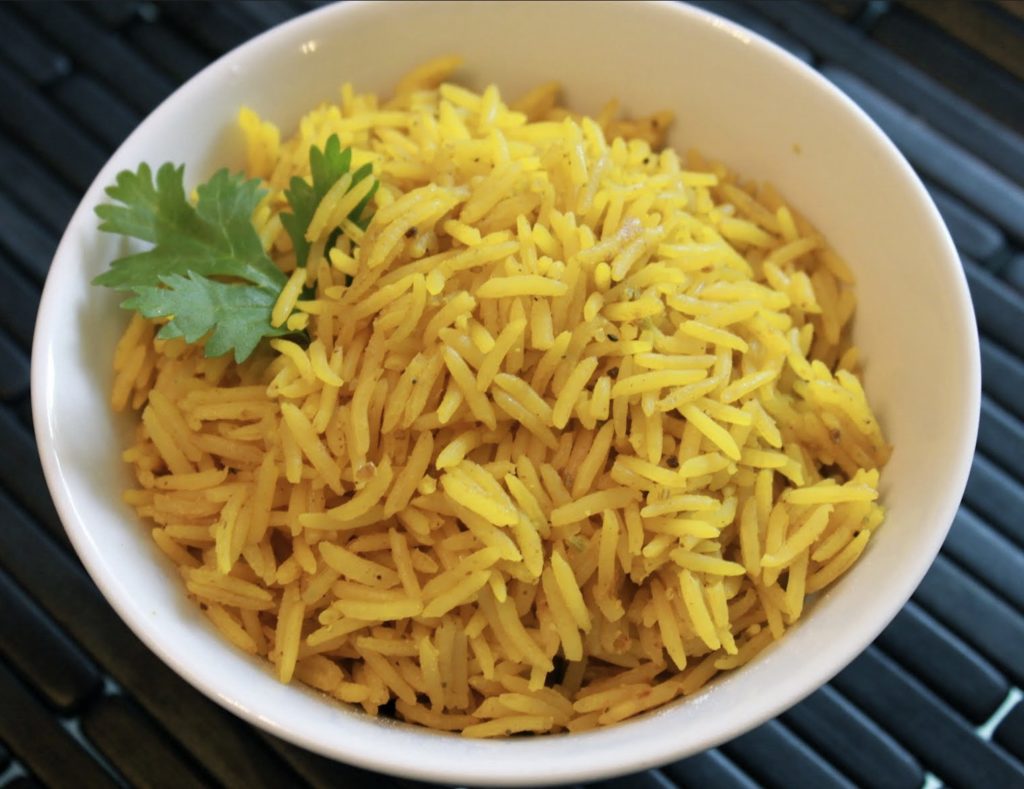
Yes performed two sold out shows at Manchester’s Free Trade Hall on the Tales From Topographic Oceans tour on 28 and 29 November 1973. It is unclear during which of these two nights the events that we will talk about happened.

The audience gave the band a rapturous welcome on both nights as the Firebird Suite announced their arrival. They launched into Siberian Khatru and followed up with a few more old favourites.
Vocalist Jon Anderson would then lead the band through the new album Tales From Topographic Oceans in its entirety. The double album contains 80+ minutes of music, organized as four long pieces of a more experimental nature than normal, with many lengthy instrumental passages that at times almost veer off into the avant-garde. It was demanding music to play. It demanded a lot of the listener as well.

In the middle of this lengthy musical exercise, Anderson could suddenly feel the scent of… curry? He shrugged it off – surely he was imagining it. As the scent grew in strength, he started looking around during one of guitarist Steve Howe’s instrumental breaks. The scent seemed stronger on keyboardist Rick Wakeman’s side of the stage. As he got closer, he could not believe his eyes. Wakeman was having a curry dinner spread atop one of his keyboards and tucking in, in the middle of the concert. As Wakeman noticed the hapless vocalist, he smiled and said “Hi Jon, fancy a bite?”
This is just one version of “the curry story” which has been told in many different ways over the years. It has long since attained mythical proportions. The overall gist of it is usually that during some of the more ponderous passages of Yes’ epic-length Tales From Topographic Oceans, Wakeman got bored, ordered take-out curry and dined on it while seated behind his huge bank of keyboards.
The outlines of most versions of the tale are usually based on fact, but the retellings are often prone to inaccuracies or wild exaggeration. Let’s try to avoid that and take a closer look at what happened.

It was the 1970s – the decade of excess for the music industry, both on and off the stage. Bands like Yes exemplified some degree of both, but they particularly pushed the envelope musically. Their musical output kept getting more intricate, with an increasing number of musical passages and correspondingly longer songs. On 1972’s Close To the Edge, they created a near 20 minute piece of music with the title track, which filled up the entire side of a vinyl record. The album and title track was a huge success, rightly hailed as one of the best pieces of progressive rock to come out of this era.
Where to go from there? There was certainly no pulling back. In fact, they wanted to go even further. Why fill just one side of a record with a long, complex piece of music when you can do it on both? And why limit yourself to a single album, when you can release a double?

A lot could be said about the creation of 1973’s Tales From Topographic Oceans, when the band rebuilt the studio into a farmyard to ensure they were inspired by “a country atmosphere” – as well as building a bathroom for Jon Anderson to sing in, as he loved how his voice usually sounded in his own bathroom. The creation of that album could have been a tale of its own, but suffice to say, the result was a double album where all four record sides contains one 20-ish minute long track. In sum, they form parts 1-4 of a larger musical piece, where each part represents one of a body of four Hindu texts called the shastras – comprehensive treatises that convey profound truths under a veil of detailed symbolism. The scope of the resulting record is vast – nothing but sheer and glorious megalomania from start to finish and as over-the-top as it gets. Consequently, the album is usually either fully embraced or utterly dismissed.
One of the most frequently recurring – and in this writer’s opinion, valid – criticisms of the album is that there is a lot of padding. The band seemed to have about 50 minutes of viable music for an album that ended up being over 80 minutes long. There are certainly good moments on it; even excellent moments. As an album, however, it is still a challenging listen from start to finish due to its many sections of directionless instrumental meandering. Some of the ideas that work would also no doubt be better served by developing it as an idea of its own, rather than integrating it into a longer piece of work.

Even within the band there was difference of opinion about the album’s merits. Keyboardist Rick Wakeman has always been its biggest public critic. He has never been a fan, and has always made this opinion known whenever the album is discussed. “There are some good moments,” he later reflected, “but it’s like wading through a cesspool to get to the water lily.”
As the band started the tour, they had decided to play all four sides of the new record in full. This was a challenge for Wakeman, who did not enjoy most of the new music. After a while, the band realized that it was a challenge for the audience as well, as there was so much new and unusual music to sit through. “People started falling asleep around side three,” bassist Chris Squire recalled to Classic Rock in 2002, “but you had to stick with it.”
Eventually they acknowledged that they started losing a lot of the audience during certain points of the Tales section. They started dropping sections of the new album to accommodate this, adding a few extra older favourites instead. This made the shows a lot more lively.

The band was still playing the full Topographic Oceans when they rolled into Manchester in late November 1973. The band had worked their way to the new material, which contained passages during which the keyboardist was bored out of his mind. There were also large sections where the keyboardist didn’t have anything to do, as other band members got the spotlight for solitaire performances.
In those days, Wakeman had a big analogue keyboard set-up, and he used to have his keyboard technician – the late John Cleary – lie underneath the Hammond organ throughout the entire set. The pretence was that if anything went wrong, which it did on a regular basis, he would fix it. He would also have the secondary function of handing Wakeman alcoholic beverages during the show.
During the sections of the show when the keyboards were silent and there wasn’t much to do, they would start having small chats about this and that.

As detailed in Wakeman’s book Grumpy Old Rock Star, on this particular night in Manchester, Cleary was asking Wakeman a question. Wakeman thought he said, “What are you doing after the show?” Wakeman answered, “I’m going to have a curry.” Cleary followed up with “Right, what would you order?”
Wakeman thought this seemed a strangely specific question, but as he didn’t have much else to do, he told him: “Chicken vindaloo, Pilau rice, half a dozen Poppadums, Bhindi bhaji, Bombay aloo, and a stuffed Paratha.” Cleary nodded.
About half an hour later, in the middle of the next piece, Wakeman was playing along when he started to get the distinct waft of curry. Within a minute, the smell was overpowering and he noticed it was coming from his feet. He looked down, and his roadie was lying there holding up an Indian take-away.
“What’s that?!!”
“Chicken Vindaloo, Pilau rice, half a dozen Poppadums, Bhindi bhaji, Bombay aloo and a stuffed Paratha.”
“What?”
“You said you wanted a curry.”
“No. I said I wanted a curry after the show.”
“Oh”.
Wakeman planned to wait, but Cleary warned him that the food would go cold. As it smelled really good and he still didn’t have a lot to do, he concluded he might as well tuck in. Cleary passed up the little foil trays which Wakeman spread out on the Hammond and other keyboard tops.
Five minutes later, Jon Anderson appeared next to the tower of keyboards. “I can smell curry,” he said. “Yes, I’ve got Chicken Vindaloo over here, Pilay rice, some Poppadums over there, a stuffed Paratha in the middle, Bombay aloo, Bhindi bhaji: splendid. Tuck in, help yourself.” Anderson took a good look at the culinary insult and shrugged. Poppadum in hand, he returned to his microphone to sing his next part.
“The rest of the band weren’t too impressed at the time,” Wakeman said, “although in later years they did laugh about it. And I tell you what… it was a bloody nice curry!”
Wakeman’s disenchantment with the musical direction Yes took on this album was strong enough that he eventually decided to leave the band, which he did after having fulfilled commitments for the album’s tour in April 1974. He would return in 1977… but that is another story.
Related article: When Rick Wakeman pushed Salvador Dali off the stage
Related article: When Rick Wakeman’s inflatable farting dinosaurs started humping
Sources:
“Close To the Edge – the Story of Yes” by Chris Welch
“Grumpy Old Rockstar” by Rick Wakeman
“Yesstories – Yes In Their Own Words” by Tim Morse

Facebook Comments